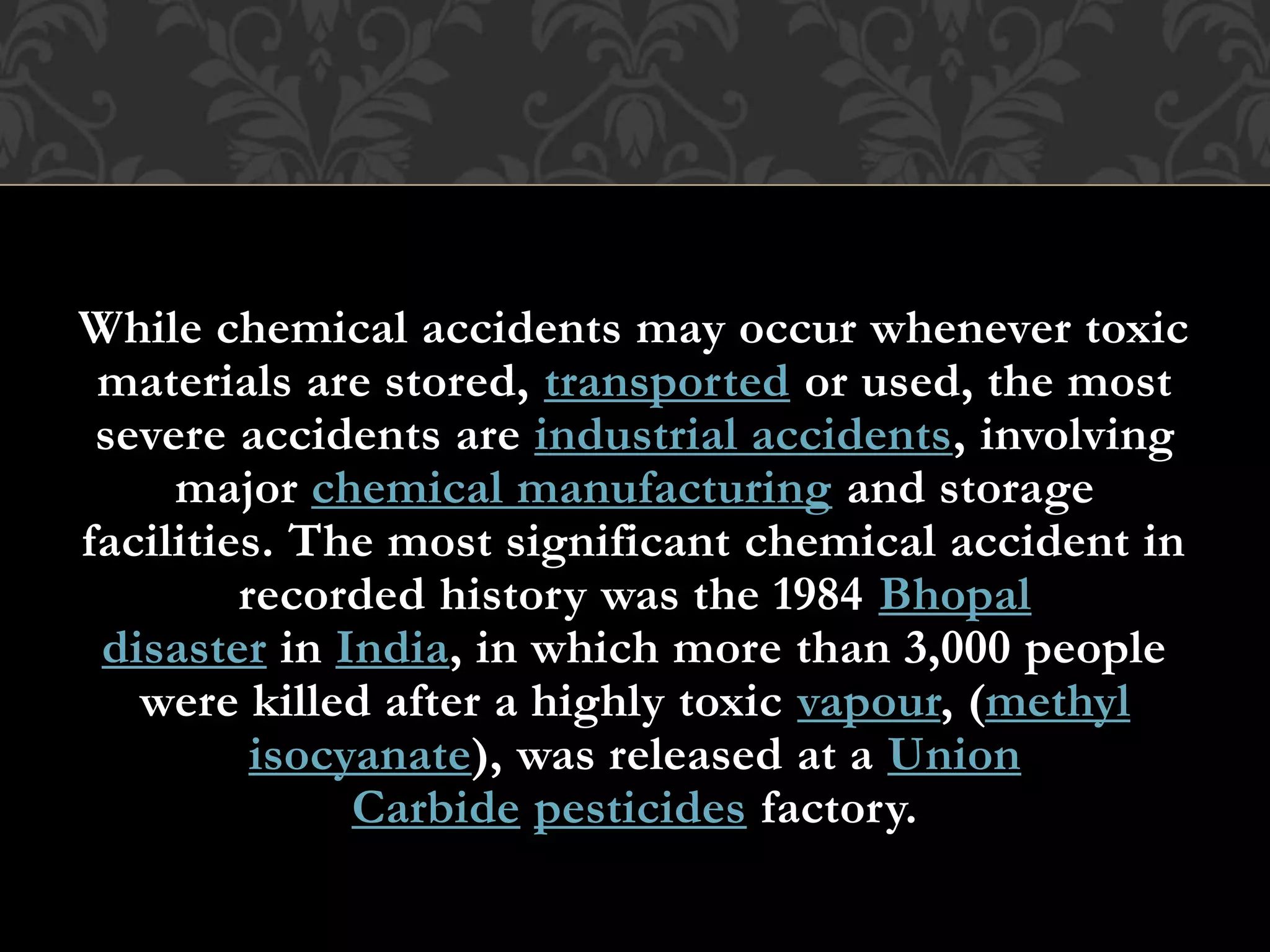The document discusses the implications of chemical accidents, defining them as unintentional releases of hazardous substances that pose risks to human health and the environment, with severe incidents exemplified by the 1984 Bhopal disaster and the 2005 Jilin chemical explosions. It outlines necessary precautions before, during, and after a chemical disaster, as well as the responsibilities of industries and communities in ensuring safety and emergency preparedness. The Jilin incident is highlighted as a significant case, detailing the explosions' causes, environmental impact, and the subsequent response and water supply crisis in affected areas.













![Explosions
The cause of the blasts was initially determined two days after the blast:
the accident site is a nitration unit for aniline equipment. T-102 tower
jammed up and was not handled properly, hence the blasts. The blasts
were so powerful that they shattered windows at least 100 to 200 meters
away; at least 70 people were injured and six were killed. Thefires were
finally put out early in the morning of November 14. Over 10,000 people
were evacuated from the area, including local residents and students at
the north campus ofBeihua University and Jilin Institute of Chemical
Technology,[3] for fear of further explosions and contamination with
harmful chemicals. to investigate the cause of the incidents.](https://image.slidesharecdn.com/economicsproject-180120082514/75/Human-Induced-Disasters-Chemical-Disaster-Accident-14-2048.jpg)
![The CNPC, which owns the COMPANYin charge of the
factory, Jilin Petrochemical Corporation, has asked senior
officials to investigate the cause of the incidents.[4]
The explosions are not thought to be related to terrorism,
and the COMPANY told a press conference that they had
occurred as a result of a chemical blockage that had gone
unfixed.[5]
The municipal government asked HOTELS
AND restaurants in the city to provide rooms for the
evacuated people. Taxi COMPANIES also aided in the
evacuation.](https://image.slidesharecdn.com/economicsproject-180120082514/75/Human-Induced-Disasters-Chemical-Disaster-Accident-15-2048.jpg)
![WATER POLLUTION
The explosion severely polluted the Songhua River, with an
estimated 100 tons of pollutants
containing benzene and nitrobenzeneentering into the
river.[6] Exposure to benzene reduces white blood cell count
and is linked to leukemia.
An 80 km long toxic slick drifted down the Amur River, and
the benzene level recorded was at one point 108 times above
national safety levels. The slick passed first on the Songhua
River through several counties and cities of Jilin province,
including Songyuan; it then entered the province
of Heilongjiang,
with Harbin, CAPITAL of Heilongjiang province and one
of China's largest cities, being one of the first places to be
affected.](https://image.slidesharecdn.com/economicsproject-180120082514/75/Human-Induced-Disasters-Chemical-Disaster-Accident-16-2048.jpg)








